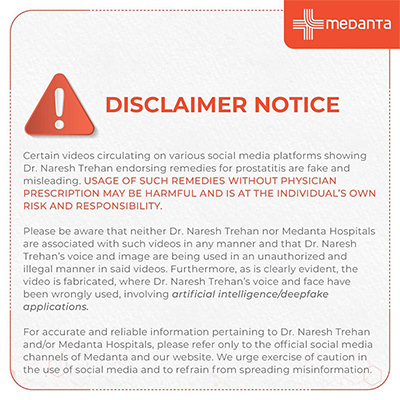
Chylothorax: A Rare Presentation of Tuberculosis
A 13-year-old boy presented to Medanta - Gurugram with the history of fever and loss of appetite for 2 months along with cough and fast breathing for 1 week. He also had history of significant weight loss of around 10kg in the last 2 months. There was no contributory past and/or family history. At the time of presentation, the child was alert, sick looking with tachycardia – heart rate of 136 beats/minute, tachypnea – respiratory rate of 65 breaths/minute, subcostal, intercostal retractions, and nasal flaring with room air saturation of 88%. Examination revealed markedly reduced air entry on the right side and basal bilateral crepitations. Rest of the systemic examination was within normal limits.
In view of the features of respiratory distress and increased work of breathing, he was immediately put on non-invasive ventilation with pressure support of 14cm of water and positive end-expiratory pressure (PEEP) of 7cm of water along with other supportive care. Chest X-ray showed right-sided consolidation with pleural effusion. In view of severe respiratory distress, urgent diagnostic pleural tap followed by therapeutic intercostal drain (ICD) was planned. Pleural tap revealed milky white fluid suggestive of chyle, which was sent for investigation. ICD drained about 700ml milky fluid, which was partly replaced with 5% albumin over slow infusion. Child clinically improved after the ICD drainage. Pleural fluid analysis showed 3500 cells with lymphocytic predominance (96%), high triglyceride levels (1815mg/dL) and chylomicron, confirming the fluid to be chyle and differentiating it from the other causes such as pseudochylothorax.
However, gene-xpert test for tuberculosis in pleural fluid came negative. Other laboratory investigations showed mild anaemia with leukocytosis. CT chest showed cavitary lesions highly suggestive of infective lesion. Provisional diagnosis of chylothorax secondary to trauma, post-surgical bacterial infection, tuberculosis infection, malignancy, immunodeficiency or pseudochylothorax was kept. Child was started on broad spectrum antibiotics and work-up for the above-mentioned differentials were sent. There was no history of trauma or surgery present, and since pleural fluid gene-xpert test result was negative, induced sputum for the same was sent for tuberculosis infection; it came back positive and was Rifampicin-sensitive. Meanwhile, the child improved clinically, and was taken off oxygen support within 48 hours of admission. ICD was removed on Day 3 without any further collection. Bacterial culture sent from the blood as well as from pleural fluid came sterile.
Final diagnosis of chylothorax secondary to new onset microbiologically confirmed Rifampicin- sensitive Pulmonary Tuberculosis. First-line anti-tubercular drugs were started along with pyridoxin. Child is being followed up in the out-patient department and is doing well with good weight gain.
Discussion
Typical characteristic of tubercular pleural effusion is that of straw-coloured fluid. This fluid is secondary to the inflammatory pleural reaction to tubercular bacilli. Tubercular effusion presenting as chylothorax is rare. There are a few, isolated case reports of this phenomenon. Normal lymph production ranges from 1.5 to 2.5 liters per day, which drains into the venous system. Any obstruction to this drainage, therefore, leads to high-volume collection in the related cavity (pleura/peritoneum). Pathogenesis of chylothorax is related to obstruction or disruption of the thoracic duct by inflamed and necrotic lymph nodes leading to leakage of the chyle into the pleural space. Gross characteristics are that of a milky fluid due to high triglyceride content. Lymph is inherently bacteriostatic and non irritant.
Hence, collections rarely lead to high fever or pain. Most symptoms are likely due to the sheer large volume and associated pressure effects.
Treatment is most frequently conservative, aiming for the resolution of the primary cause. Continuous loss of T cells, fat-soluble vitamins and proteins may lead to malnutrition and infections. Additionally, drainage of the accumulated chyle may also be required to relieve pressure effects as it was in this case. Low-fat or fat-free diet with medium chain triglycerides can be helpful in the dietary management. Rarely, octreotide – a new somatostatin analogue – can be administered in severe presentations to reduce the chyle
production. Interventional radiology guided embolisations of the thoracic duct is considered in refractory cases.
Clinicians must be aware of this rare presentation of tuberculosis and while analysing the chylous pleural effusion, tuberculous chylothorax disease must be considered as one of the possibilities. All possible efforts should be made to look for the microbiological confirmation of tuberculosis before making the final diagnosis. Prompt anticipation with early diagnosis is crucial in the outcome as tuberculous chylothorax is a completely
curable disease.






